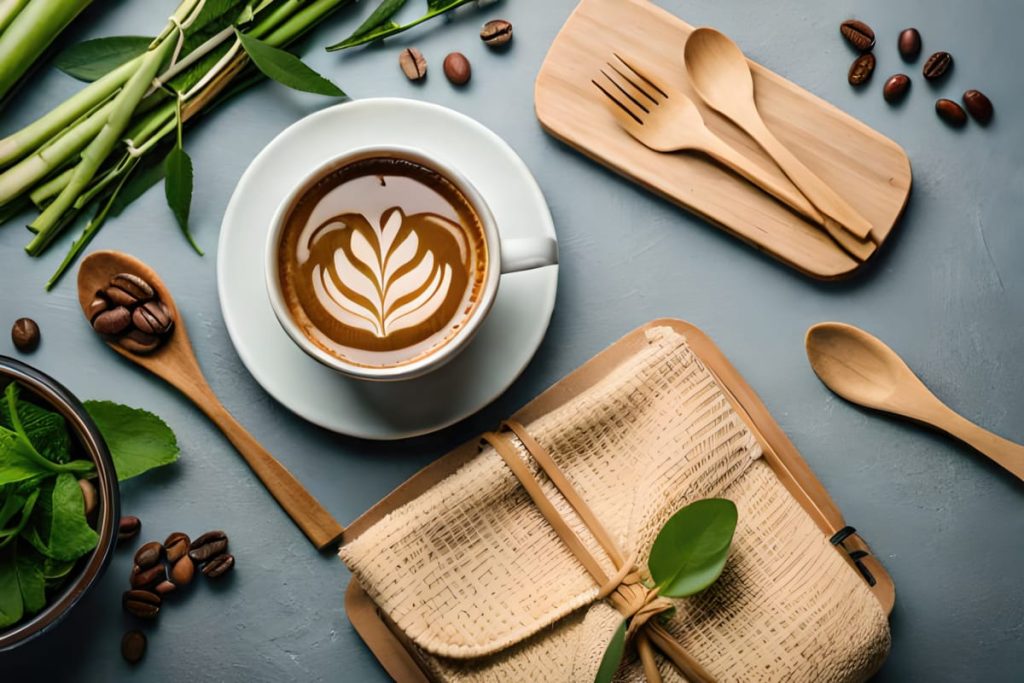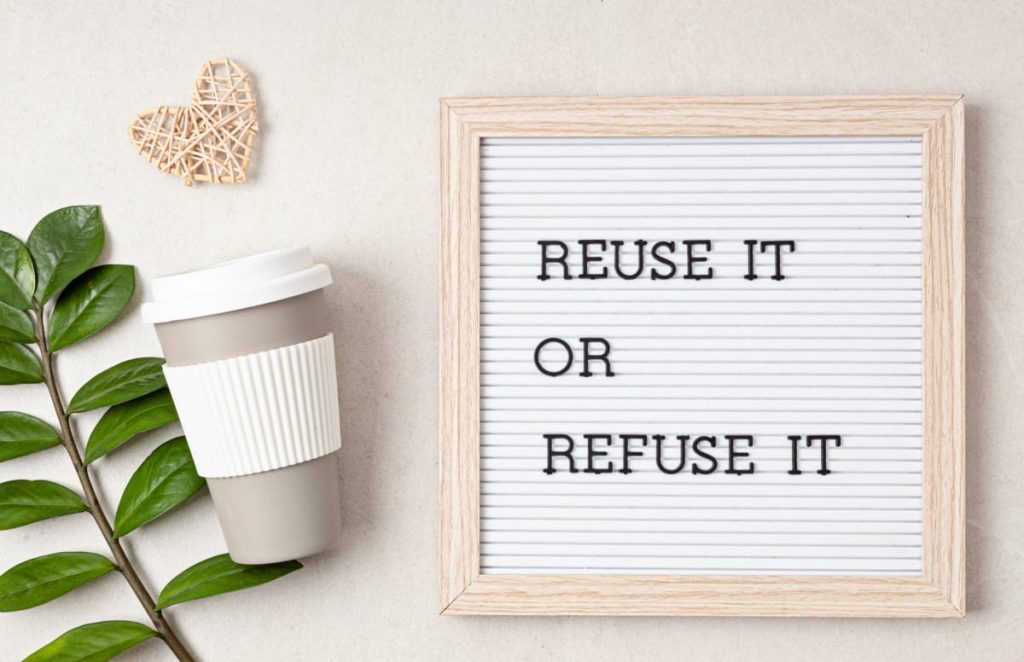The global coffee industry isn’t just about aromatic beans—it’s a colossal business that touches every continent. Yet, amid its vastness, a pressing concern looms. Traditional packaging, non-biodegradable in nature, piles up in landfills and oceans, challenging the environment’s health.

The world uses a staggering 58 billion disposable coffee cups yearly, highlighting the industry’s environmental impact. The modern coffee industry faces a transformative wave. Consumers want more than just a flavorful brew; they desire coffee that’s packaged conscientiously.
Understanding Eco-Friendly Packaging
The ever-evolving world of consumer goods showcases eco-friendly packaging as a symbol of dedication to the environment and a sustainable future.
So, how does eco-friendly packaging stand apart, especially when considering areas like coffee business supplies? Here’s what to know:
- Materials – The essence of eco-friendly packaging lies in its choice of materials. These materials, primarily sourced from renewable resources, often possess biodegradability, recyclability, or compostability. Examples of such materials include bamboo, recycled cardboard, and plant-based plastics.
- Production process – Sustainability isn’t just an endpoint; it’s a complex journey. The emphasis here is on waste reduction, energy-efficient manufacturing, and minimizing harmful emissions.
- Disposal and reuse – The aftermath of a product’s life is crucial within the eco-friendly paradigm. Whether tailored to degrade without harming the environment or crafted for repurpose, sustainable packaging emphasizes waste reduction.
- Design efficiency: The packaging design is a significant aspect to consider. Opting for streamlined strategies that reduce excess achieves a harmonious balance between function and environmental care.
Given the mounting environmental concerns, there’s a heightened momentum towards eco-friendly packaging, especially within the coffee sector, making this shift imperative.

Why Coffee Businesses Should Adopt Eco-Friendly Packaging
As the demand for coffee continues to rise, the environmental implications of its packaging come into sharper focus. The transition to sustainable packaging solutions is a business imperative. Here’s why:
- Consumer demand – Modern consumers often reward businesses that visibly prioritize environmental care. Sustainable packaging is now essential for many customers’ purchasing decisions.
- Environmental impact – The staggering amount of coffee packaging waste produced daily takes its toll on Mother Nature. By shifting to sustainable materials, coffee businesses can play a pivotal role in reducing this strain on landfills and marine ecosystems.
- Economic benefits –While initiating the switch might come with certain costs, the long-term financial benefits are noteworthy. Sustainable packaging can lead to decreased waste management expenses and, in some regions, potential tax incentives.
- Brand image and reputation – In today’s era, where brand reputation holds significant importance, companies that embrace green practices distinguish themselves from the rest.
- Future-proofing the business – As environmental regulations become more stringent, companies already adopting sustainable practices will find themselves better positioned.
Prioritizing eco-friendly packaging isn’t merely a nod to environmental consciousness. It’s a strategic move anticipating the future landscape of the industry.
Challenges To Implementing Eco-Friendly Packaging
While the push for eco-friendly packaging and numerous benefits is evident, the transition is challenging. Here are some of the hindrances coffee businesses might face when moving towards sustainable packaging solutions:
- Initial costs – Sustainable materials often have a higher price tag than traditional ones.
- Supply chain disruptions – Finding reliable suppliers consistently providing sustainable materials can sometimes be tricky. Transitioning also means re-evaluating and adjusting existing supplier relationships.
- Consumer education – While many consumers advocate for eco-friendly practices, not all know the nuances of sustainable packaging. Businesses must invest in educating their clientele.
- Durability and functionality concerns – Some eco-friendly materials may not offer the same durability or protective qualities as their traditional counterparts.
- Regulatory and compliance issues – As the global interest in sustainability grows, so does the complexity of regulations around packaging. Businesses must keep abreast of varying international standards, especially if they operate or ship products across borders.
- Design limitations – Eco-friendly materials might have certain design constraints, limiting branding opportunities or necessitating a redesign of packaging aesthetics.
- Perception challenges – There’s a misconception among some consumers that sustainable products might be of lesser quality. Overcoming this bias and ensuring the brand’s premium image remains intact can be an additional challenge.
Navigating the transition to eco-friendly packaging, though commendable and essential, requires coffee businesses to be acutely aware of the accompanying challenges. With proactive and strategic approaches, they can ensure a smoother and ultimately beneficial shift in the long run.
Some Eco-Friendly Choices For Coffee Businesses
Coffee businesses looking to make an eco-friendly shift have a range of sustainable packaging options available:
- Biodegradable bags – Made from materials that naturally break down over time, these bags leave minimal environmental residue and are perfect for short-term storage.
- Compostable bags – Often derived from plant-based materials, these bags can be added to compost heaps, turning into nutrient-rich compost over time.
- Recycled cardboard boxes – For larger shipments or bulk orders, boxes made from recycled cardboard reduce waste and promote circular materials usage.
- Reusable tins and jars – These not only give a premium feel to the product but also encourage consumers to reuse them, minimizing single-use packaging waste.
- Plant-based plastics – Innovations in packaging technology have led to plastics derived from plants, offering similar durability as traditional plastics but with an eco-friendly footprint.
Utilizing these alternatives showcases a business’s dedication to sustainability and provides a competitive edge in the market.
Final Thoughts
In an age where every choice echoes in the environment, the steps coffee businesses take today will sculpt the world of tomorrow. Embracing sustainable packaging is not just an option—it’s a responsibility. For those ready to champion a greener future, the journey begins with rethinking packaging. Will your business lead the way?



Recent Comments